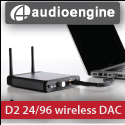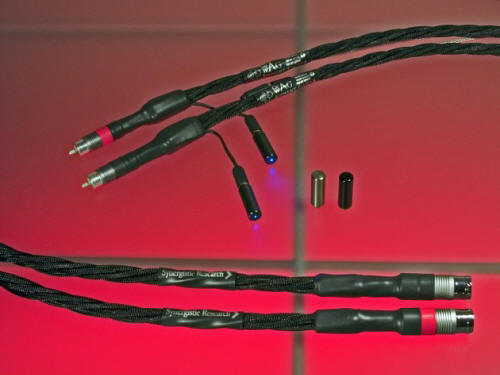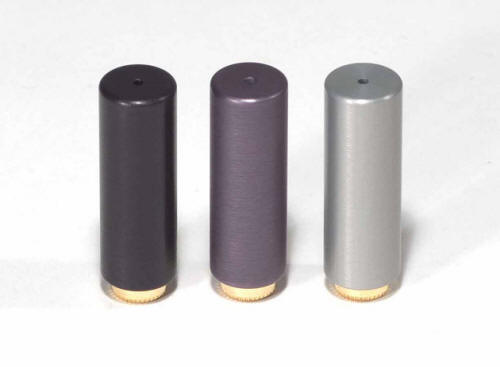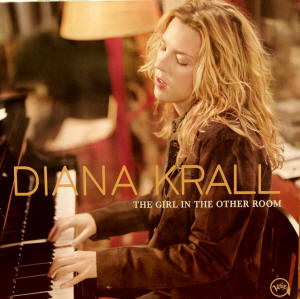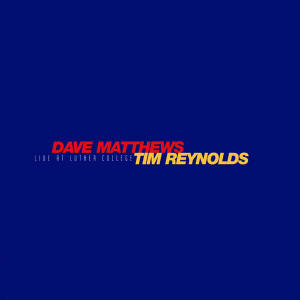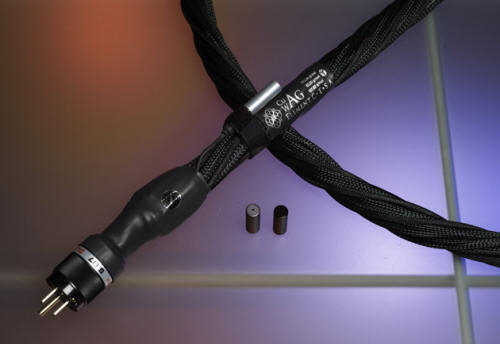|
|
You are reading the older HTML site
Positive Feedback ISSUE 70
synergistic research Element CTS Power Cords, Interconnects, and Loudspeaker Cables as reviewed by Robert Youman
Element CTS Interconnects If you read my review of the Magico Q7 Speakers and the Vitus Audio RI-100 Integrated Amplifier, you know that I consider both to be extremely valuable evaluation tools. Every change in the system is easy to hear and differentiate. This held true for my time with the Synergistic Research Element CTS power cords, interconnects and speaker cable. The improvements were not subtle. The CTS Element series are the most dynamic, transparent and yet natural sounding wire that I have experienced. Review System
MagicoQ7 Speakers Caveat Emptor System synergy and personal taste are critical when evaluating high-end audio products. This review is based on my subjective requirements, my subjective ears, and my specific system and listening room. These combinations of components are only a few data points of many that exist out there. For further insight into my personal biases, check out the "Meet The Writers" section of Positive Feedback Online. Please consider my comments and analysis appropriately.
Element CTS Speaker Cable Design The Synergistic Research Element line of products utilize trickle down technologies from the flagship Galileo research and development. There are three Element models. Each employs a specific loom material or combination of materials: Copper, Tungsten and the combined Copper/Tungsten/Silver (CTS). Each can provide a level of customization depending on your specific listening priorities and your system needs. My focus here will be the top of the line Element CTS wire which is said to exhibit the best of all three materials. Please see the Synergistic Research website for additional specifications and information. I find their explanation of the development process behind the three models and how each material can impact the sound to be very interesting reading—especially their findings on Tungsten. A key component of the Element series is the use of their "Active Shielded Air Dielectric" technology which manages reactive capacitance (signal and cable interaction) and overall shielding performance. Active shielding is not a new idea, but these folks have found a very efficient and effective way of implementing the benefits of this design choice. This feature also includes optional "Enigma Tuning Bullets" which can be used for a second level of customization. There are three flavors of Bullets. Synergistic Research explains the differences in the following way. Based on my experience, these are over simplifications as the results are much more sophisticated, but they will give you a basic understanding of what is happening. I found this fine tuning to be very effective.
Active Shielded Air Dielectric does require a source for its own power. This means that one mini power coupler (MPC) or wall wart is included for each pair of interconnects, each pair of speaker cables and each power cord. On the surface, this might sound imposing. How many outlets are you really going to need? Using a high quality power strip like the Synergistic Research Quantum Line Strip (QLS) makes this a fairly simple implementation. I was able to cleanly dress all the MPC's and power cords in a nice neat effective layout. There are additional products called the Transporter Ultra and Transporter Ultra SE that allow you replace several individual MPC's with a one box centralized power supply.
Enigma Tuning Bullets Sound I "burned in" all Element CTS components for two weeks before serious evaluation, but I must say that I did sneak a peek on a few occasions. It took some time for things to settle in, so please be patient if you decide to audition these products. Bottom line. The aggregate effect was that so much new information was now flowing into the listening room that it became slightly overwhelming. The sound stage extended well beyond the speakers and even the walls on some recordings. The Ernest Ansermet directed Royal Ballet Gala on Classic Records (45 rpm LP version) is a case in point. The layers of musicians on stage and the far corners of the recording venue were so extensive and so well defined that I almost wondered if some trickery was going on. I think not. It was just the combination of the Q7s, RI-100 and an all Element CTS configuration.
Images were now vividly locked into a three dimensional presentation like I have never experienced before. I have sensed inklings of this in the past, but now I was clearly hearing when a vocalist or a musician was moving their head or walking around the stage. For example, Harry Belafonte was really having some fun throughout his At Carnegie Hall RCA release (original pressing 33 rpm LP version). He is constantly turning back and forth to both the audience and musicians as if he could not get enough of either. With this system, I could not get enough either. Mids and highs were neutral and lightning fast, yet still had appropriate weight, timbre and pitch. No false romance here, but I never experienced any type of edge or sibilance unless it was on the recording itself
Diana Krall's voice on The Girl In The Other Room (SACD) was properly fleshed out and had much more inner detail then I remember in past listening sessions. Diana's vocal skills are sometimes undervalued if not criticized. Many feel the same about her abilities on piano. For me, her timing and phrasing on both seem wonderful to me and continue to grow with each album. On this recording, via the Element CTS, piano had plenty of power and natural presence—especially in the lower registers.
The Dave Mathews and Tim Reynolds Live at Luther College CD demonstrates some dazzling closely miked acoustic guitar interplay. This CD that can sound slightly grainy on some systems. With the Element CTS, strings still had breath taking speed and clarity, but now also the appropriate amount of sweetness and texture. Even the banter by both artists between songs seemed much more intimate and realistic. All of this makes you feel like they are really there in the room with you. The biggest surprise here was bass response. I thought that I had squeezed every last drop of definition and authority from the Q7 and RI-100 combination, but now it sounded and felt like I was getting another octave on many recordings. There was so much more dynamic punch and slam, that the framed art on my listening room walls were now vibrating on certain recordings. This has never been the case with any other speakers or subwoofers under review. Yes, the Element CTS was now pushing the envelope, but there was no mid-bass hump or artificial bloom to accomplish this. Like a sledge hammer, output was still extremely tight with even more harmonic density and impact.
A good test for bass performance is the Mark Levinson produced and engineered SACD entitled Red Rose Music Volume I. This is an all DSD recording. Track 7, "Little Dog's Day", with his ex-wife Kim Cattrall on vocals and Levinson himself on acoustic bass can be very enlightening. Yes, this is the same Kim Cattrall of Sex In The City fame. Not a big fan of the show or movies, but my wife is so it was hard not to be aware of her presence. And yes, this is the same Mark Levinson responsible for audio classics like the Mark Levinson ML-2 monoblock amplifiers and JC-2 preamplifier. We know about his audiophile legacy, but I must compliment Levinson on his bass playing abilities too. The dynamic shifts and rhythmic vitality of his efforts are impressive. The depth and level of articulation in the recording is startling. My apologies for repeating a line from another review, but you could almost sense the rosin floating in the air as he plucks away at the strings. Talk about goose bumps! One last comment on the Element CTS that I feel is important. I am always looking for a realistic level of transient extension when it comes to the leading and trailing edge of a note. Some products specialize in one or the other, but rarely do you get it right for both. This is especially difficult when listening to digital. Sometimes it almost sounds like a stop and go bus route with nothing happening in between. Closely tied to this is the sound of the instrument itself. Are you hearing the metal bell on high hat cymbals or just the sizzle after effect? Can you sense the woody textured tone of the violin body, or just the snap and shimmer of the nylon strings? In the ideal world, you would like as much lingering extension in both directions and some balance to the sound of the instrument. The Element CTS gets closer to the truth for both. The Little Things That Make It Sound Real It is difficult to describe the experience, but we all know it when we hear it. I am talking about the lifelike spatial queues of ultimate resolution that suddenly pop out into your listening room unexpectedly. This is not always some unearthed quality from a particular instrument or voice. It can be something like the clattering of a broken glass in the audience on Jazz At The Pawn Shop, the air conditioning and bus sounds in the background on Trinity Sessions by The Cowboy Junkies, or even the barking dog that seems to be coming not from your listening room but the house next door in Roger Waters Amused To Death. In addition to the sound quality of the music being reproduced (the top priority), these little things can make it all so very real. More often than not they can also cause the hair on the back of your neck to stand on end! Like no other wire that I have experienced, these inflections are realized and more pronounced than ever before with the Element CTS products. Though many find this trivial, I really enjoy when this happens. For me, it just enhances the entire emotional connection. Impact Of Each Link I have not discussed the process that I went through when evaluating each link in the system. No need to get into that level of detail here, but I can provide some subjective findings. Remember, this can vary greatly by your specific biases, your specific listening room and your specific combination of components. In addition to my statements above for the entire system wired with Element CTS, I did try to isolate the power cords, interconnects and speaker cable individually to try to understand their impact. My findings were that they all played an important role and were all in the team picture when the medals were handed out. No surprise there. However, there was something even more special about the power cords. This makes some sense as Synergistic Research has a long proud history with power cords going way back to their A/C Master Coupler. If you were going to start anywhere with one link to determine system compatibility, I would start with these power cords. When evaluating by almost any listening criteria, they brought out the best in not only an all Element CTS system, but also when mixing and matching with other brands and models. By using the Enigma Tuning Bullets, you can tune the power cord (and also the interconnects and speaker cable for that matter) to complement the other wire products in your system. Having said that, I will have to steal an analogy from Peter Hansen, Vice President at Synergistic Research. My guess is that most manufacturers will say the same. I will try to paraphrase. It's like a stream flowing down hill. You can still have an impressive amount of flow and harmony within the water running down that stream, even when there are rocks, branches and other hindrances along the way. Remove those hindrances and you have even more efficiency and harmony. In short, there can be substantial improvements in terms of synergy and reward when wiring your entire system with one brand and model of wire. Based on my experience over the years with many high end wire products, I agree with this strategy. In most cases, this is the most effective way to build a system and seek out its highest level of sound quality. I also want to plant a seed on one more import variable. I am in the process of reviewing the Synergistic Research Powercell 10 SE MKIII. This is a power conditioning product with considerable enhancements from prior models. If you like what I said above about the Element CTS series, just try plugging everything into the Powercell. Another stellar performer from Synergistic Research. Stay tuned!
Element CTS Analogue Power Cable Final Thoughts The Synergistic Research Element CTS series continues to amaze as I work my way through my favorite CDs, SACDs and LPs. I am hearing things that I have never heard before with titles that I have played hundreds of times if not more. I have not been this inspired to spend this many hours rediscovering my collection in several years. Even family members seem to be slipping in and spending more time with me in the listening room. Out of the box design choices and creative execution of these choices are intriguing if not admirable. Build quality is superb. The ability to customize on several levels provides unique flexibility and adaptability. Most importantly, over all sound quality surpasses every other wire offering that I have auditioned in my system. Very highly recommended! Robert S. Youman Pricing (MSRP) 1 Meter Element CTS Interconnects (RCA) $3600 1 Meter Element CTS Interconnects (XLR) $3695 1 Meter Element CTS Phono Reference Cable (RCA ) $2995 6 Foot Element CTS Speaker Cable (Spades or Bananas) $7125 5 Foot Element CTS Analogue Power Cord $2800 5 Foot Element CTS Digital Power Cord $3000
Synergistic Research
|


